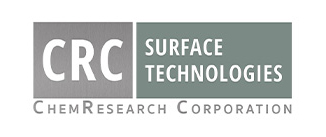
23 Oct 4 Advantages of Silver Electroplating
Silver plating dates all the way back to the 18th century, when it was used to make silver items accessible to more households. Today, silver electroplating is used in many industries for its wide range of impressive benefits. From its antimicrobial properties to its superior electrical conductivity, silver electroplating offers many advantages. We take a closer look at the process and its benefits below.
What Is Silver Electroplating?
Silver plating is the process of depositing a uniform layer of silver onto the surface of a substrate. It involves immersing a silver electrode in a solution containing silver ions and then applying an electric current. The current causes the silver ions in the solution to adhere to the surface of the object, forming a thin but durable layer of silver.
What Are the Advantages of Silver Electroplating?
1: Exceptional Conductivity
Silver is renowned for its exceptional electrical conductivity. Silver only has one valence electron, which moves freely without much resistance. This makes silver the most conductive plating metal available. Silver’s high electrical conductivity makes it invaluable in the electronics industry. It helps to ensure that printed circuit boards, connectors, semiconductors, and other electronic components perform efficiently and reliably.
Silver is also an outstanding thermal conductor, making it popular in applications where heat dissipation is essential. For example, silver plating is commonly used on heat sinks for electronic devices to prevent excessive heat from damaging sensitive components.
2: Enhanced Corrosion and Wear Resistance
Silver electroplating forms a protective outer layer that resists corrosion, wear, and tarnishing. This enhanced durability holds up even in harsh environments where components are constantly subject to friction and the elements. Because of its durability, silver plating is often used for marine equipment, outdoor machinery, and electrical contacts.
3: Antimicrobial Properties
Another beneficial property of silver is that it offers natural resistance to bacteria. Silver ions actually eliminate harmful microorganisms, making silver-plated surfaces ideal for bacterial resistance. Silver plating is often used in the healthcare industry to make antibacterial coatings on medical equipment to maintain a safe and healthy environment.
4: Cost-Effective
Silver electroplating offers all of the above benefits without breaking the bank. Adding a layer of silver to a substrate is much cheaper than investing in solid silver components. In fact, silver plating was invented to imitate solid silver objects. And silver electroplating is less expensive than gold and platinum plating while offering similar advantages.
Silver Electroplating in Phoenix, Arizona
It takes the hand of a skilled professional to apply silver electroplating correctly. If you want to reap the benefits of silver electroplating, contact CRC Surface Technologies. Our team is experienced in applying over 33 different surface treatments, including silver plating. Email rfq@chemresearchco.com to request a quote, or give us a call at 602-253-4175 to learn more.
Images used under creative commons license – commercial use (10/23/2023). Photo by cottonbro studio on Pexels

